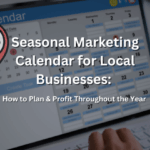When selling things online or in a store there are three things you MUST be doing in order to MAXIMIZE the amount of profit you make from each sale.
The idea is that RIGHT after you have sold someone something they are HOT as a prospect, having just whipped out their wallet and elevated to a ‘paid customer’. There is an actual momentum and this can be captured and turned into more revenue. The idea is to make additional offers after the sale, (or before the sale, depending on the situation). These offers are classified as:
- Up-sells (selling something more expansive than your main offer)
- Down-sells (selling something cheaper than your main offer)
- Cross-sells (selling something related to your offer but different, in hopes they would also be interested in that)
You see these all over, being applied in different ways.
One of the most ubiquitous examples is at the super market checkout, you are about to become a paid customer, and you’re in line to pay for your groceries and they are actually down-selling and cross-selling you on low-ticket impulsive stimulating items (candy, chocolate, junk food). They are NOT putting the chocolate bars at the checkout register for your convenience. They are maximizing their profit by squeezing in just a few more sales.
Many of you have also seen down-selling used online. If you have ever bought business cards from Vistaprint or a website domain name from Godaddy, you have been the victim of a veritable tsunami of down-sells at check out! Offer after offer of cheap add-ons for your order, no matter how many times you click ‘no thank you’ or ‘skip’.
Let’s go over each of the three in detail.
Down-sells
A person has clicked on your ad, or seen your flier and called you. You have basically acquired a prospect at this point and have spent a considerable amount of money to get this far. If you are selling your core offer and they are not buying, (whether it is on the phone or simply a landing page selling your core offer) don’t just let them say ‘no’, leave and slip through the cracks! You have already spent possibly hundreds of dollars on ads to get this prospect. Take advantage of it by offering a ‘down sell’ if they refuse to buy.
By not having a down sell you are literally throwing money away.
People who refuse, and who are about to leave should always be offered a downsell. It just makes sense. Of course, you need to have a service or product which you can use as a downsell. If you only have one product then you actually need to expand your line and create a lower ticket version of that product to be used specifically for the downsell.
NOTE: A downsell is typically used as a last resort if someone is not buying, BUT it can also be used AFTER a customer buys, in order to get more sales (like how Vistaprint and GoDaddy do).
Implementation
You can implement down-sells either on your website at checkout (if they abandon their cart and attempt to leave your site) or you can have your salespeople implement it as part of their sales pitch, by going to the down-sell if they absolutely can’t sell the core offer.
It can also be implemented with popups that make a low ticket offer when the person tries to leave the web page.
The theory of a downsell can also be applied generally. The idea is the offer we are making isn’t selling, so we need to lower the bar to something that is an easier commitment. A perfect example of this is having a page which has an offer, and if the visitor moves his cursor out of the main web page window (to leave the site) a little popup comes up with a free offer in exchange for their email. This is basically a down-sell, and it’s a great way to squeeze as much out of the customer as possible.
If your website does not have a shopping cart which sells products or services, fear not! That does not mean you aren’t able to implement this. You can still without a doubt implement down-sells, you just need to have it done by your sales people as part of their sales process.
Of course, if you have your own ‘brick and mortar’ business you can very simply implement downsells by doing what grocery stores are doing, as we already discussed.
Next
In our next article, we will look over the other two techniques: Up-selling and Cross-selling.






